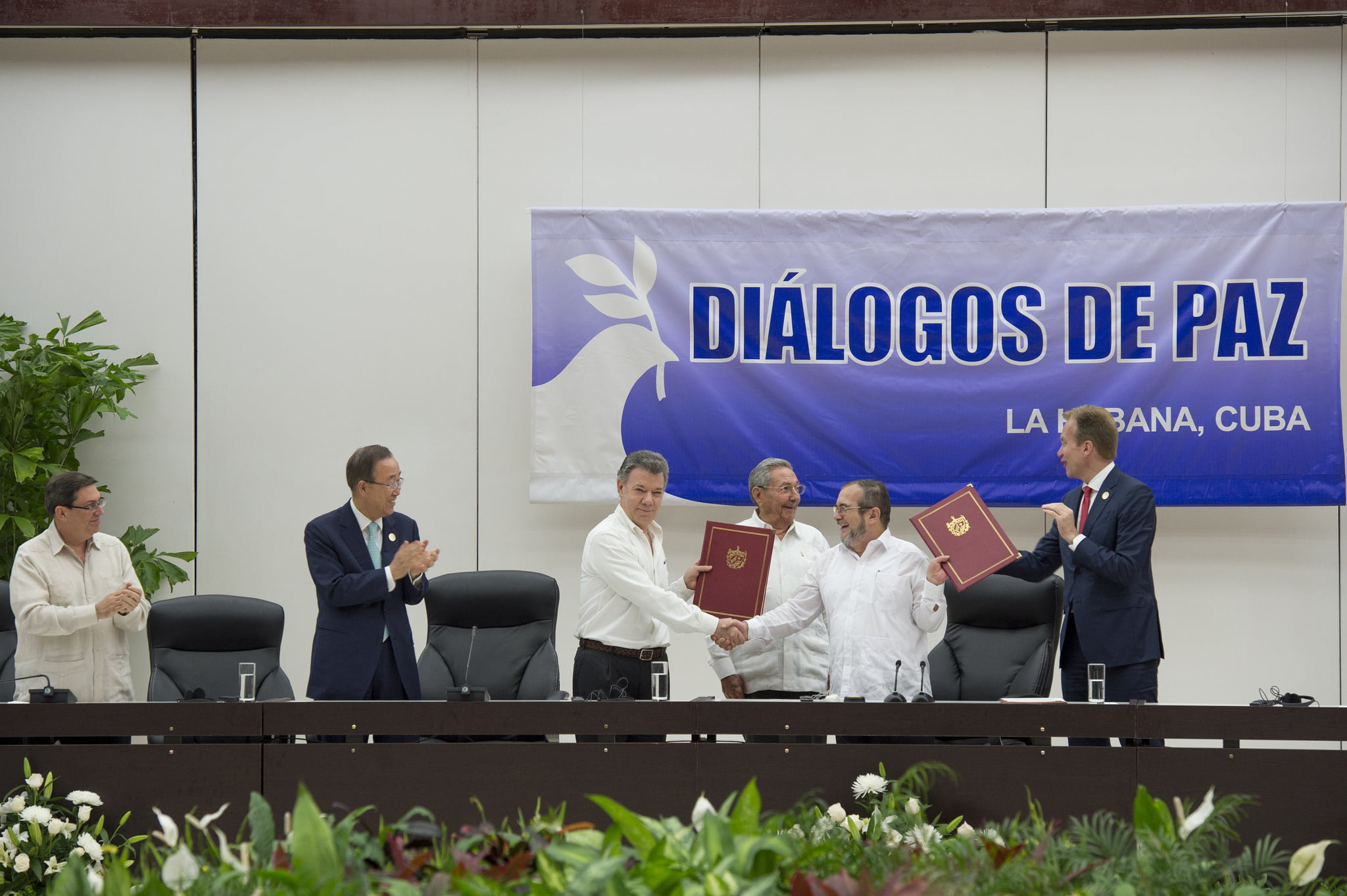This week, Colombia entered into an indefinite ceasefire between the government and FARC, the largest rebel group in the country, following agreement on a comprehensive peace deal. The ceasefire marks the effective end of a 52-year long conflict that has defined Colombian politics for half a century. In moving forward, Colombia will be getting help from the UN in the form of a peace mission approved by the Security Council in January. The far-reaching mission will oversee and verify disarmament and reintegration by former FARC fighters as well as help coordinate reparations for victims and new development projects designed to help pave the road to an enduring peace.
A Half Century of War and Misery
The conflict between the government and FARC started in 1964 after a period of instability known as La Violencia that began with the 1948 assassination of Jorge Eliécer Gaitán, a populist politician and frontrunner for the presidency. In the immediate wake of the start of the Cold War, Gaitán’s criticism of Colombia’s political and economic elites as well as his overwhelming popularity concerned many people from throughout the political spectrum. However, his sudden death proved more influential than his ideas in life as La Violencia led to a peasant-on-peasant war in the Colombian countryside for control over the nation’s agricultural land. By the time the bulk of the violence ended 10 years later, an estimated 200,000 people had been killed and nearly 1 million Colombians displaced.
Most Colombians welcomed the end of the violence but the underlying political fault lines were never seriously addressed. Instead, the larger Conservative Party and Liberal Party formed a new political system that saw them alternate control of the government, effectively restricting the participation of the smaller political parties. This created a completely new set of grievances and as a result, it was only a matter of time before new groups stepped into the political void left by La Violencia. Following military attacks on communist enclaves, the Revolutionary Armed Forces of Colombia (FARC) was created in 1964 as the military wing of the Colombian Communist Party, starting to the current conflict.
Although FARC may have started with the intention of upholding peasant rights, over the next five decades the conflict devastated many of the rural areas where these peasants live. Over time, FARC resorted to narco-trafficking and kidnappings to finance their conflict and acts of terrorism to hit at the Colombian government. In traditional strongholds where the government is largely absent, FARC still enjoys some support as the de facto government, but in most of the country where FARC’s legacy consists mainly of terrorism, there is a significant amount of hatred and distrust of the rebel group.
According to a 2013 report by the National Centre for Historical Memory, the conflict has killed more than 220,000 people, with 4 out of 5 casualties being civilians. The Internal Displacement Monitoring Centre estimates that over 6 million Colombians were displaced by the conflict by the end of 2014.

Finally, a Chance for Peace
With such a deeply rooted conflict, numerous attempts to negotiate an end to the fighting over the years frequently stalled as the parties couldn’t agree on all points. But after four years of negotiations, in January representatives of both FARC and the government requested that the UN Security Council create a peace mission for the country, helping lay down the framework for a peace deal.
That final agreement, announced last week, provides a comprehensive approach to peace.
The peace plan calls for the complete disarmament of FARC fighters and destruction by the UN of the submitted arms stockpiles. Once fighters have been demobilized, all outstanding arrest warrants will be suspended in a de facto amnesty, except for those accused of crimes against humanity. Until 2018 there will be non-voting representation of FARC in Colombia’s Congress to voice views on implementation of the peace accords, at which point FARC will be able to run in elections as a normal political party. The deal also provides for a demining program, victim reparations, development projects in traditionally neglected areas and significant land reform policies.
However while the ceasefire is already in effect, the peace plan itself still must be officially signed and approved by public referendum. The official signing may occur during the opening of the UN General Assembly in New York next month, a demonstration of the international support for this accord. The referendum is scheduled for October 2. If approved as expected, Latin America’s last major guerilla conflict will be at an end.
Colombia will have a lot of help in ensuring that the new peace endures. Already the government has requested help from several UN agencies in implementing the peace accords, with other agencies eager to step in and help. The UN Peacebuilding Fund has already committed $3 million towards implementation of the accords, with several other countries and NGOs signing up to help. Although negotiations with another leftist rebel group, the ELN, are still ongoing, a successful implementation of the accords could very well help other rebels give up their arms as well.
In a report to the Security Council earlier this month on the UN Mission in Colombia, Secretary-General Ban Ki Moon reiterated the vital role the UN has to play in building a peaceful Colombia. “I remain deeply committed to providing all the support that is required of the United Nations to this process,” he wrote. “After so many years of conflict, it may be difficult for many Colombians to imagine a future in peace. Yet the opportunity is at hand today and I hope they will be able to seize it.”
